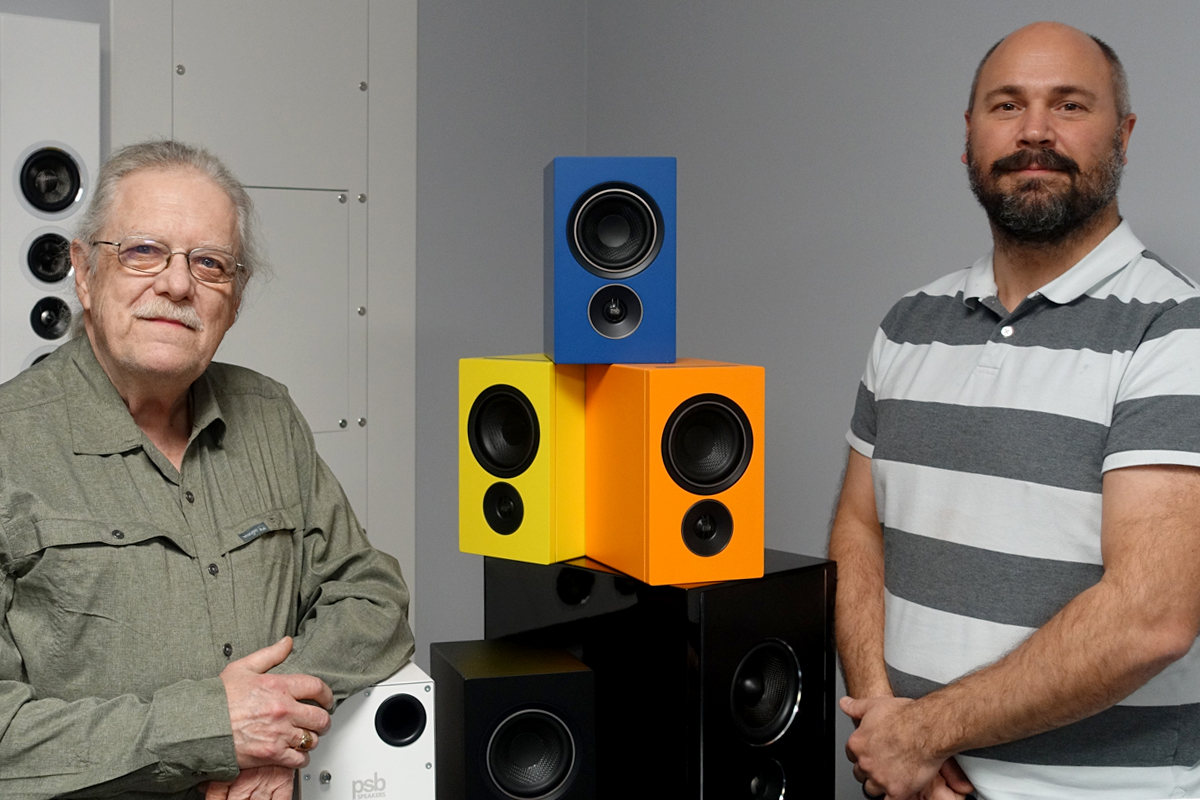Canada’s PSB Speakers was founded in 1972 by Paul Barton. PSB celebrated its 50th anniversary on July 1 (Canada Day) last year with the release of the Passif 50 ($2499/pair, all prices in USD): a retro-inspired design that evokes PSB’s Passif I and Passif II models from the 1970s.
Then, in September, PSB announced a very different product—the Alpha iQ streaming active loudspeaker system ($1499/system); shipments began in early December. Strictly speaking, the Alpha iQ isn’t PSB’s first active loudspeaker system. That distinction belongs to the Alpha VS21 VisionSound Soundbase, which was released in 2015 and has since been discontinued. But the Alpha iQ is the first active speaker system sold as a stereo pair that PSB has ever offered.
Cosmetically, the Alpha iQ and Passif 50 speakers are poles apart, though both are sold only in pairs. Whereas Passif 50s have warm, nostalgic styling, the Alpha iQ system has a modern, European look. And of course, the Alpha iQ speakers are much smaller. The Passif 50s are 26″ tall, and intended to be used with the supplied floor stands. The Alpha iQ speakers are less than 10″ high. You can use them on floor stands for sit-down listening, but they can also be used for desktop audio. I examined both applications in my recent review for Simplifi.
Functionally, the Alpha iQ system is very different from conventional speakers like the Passif 50. Each enclosure contains a DSP-based active crossover and dedicated amplifiers for each driver. You can connect source components like a turntable, disc player, or HDTV to the Alpha iQ—but you don’t have to. Equipped with a network streamer based on the BluOS software platform developed by Lenbrook Industries, PSB’s parent company, the Alpha iQ can function as a fully self-contained music system.
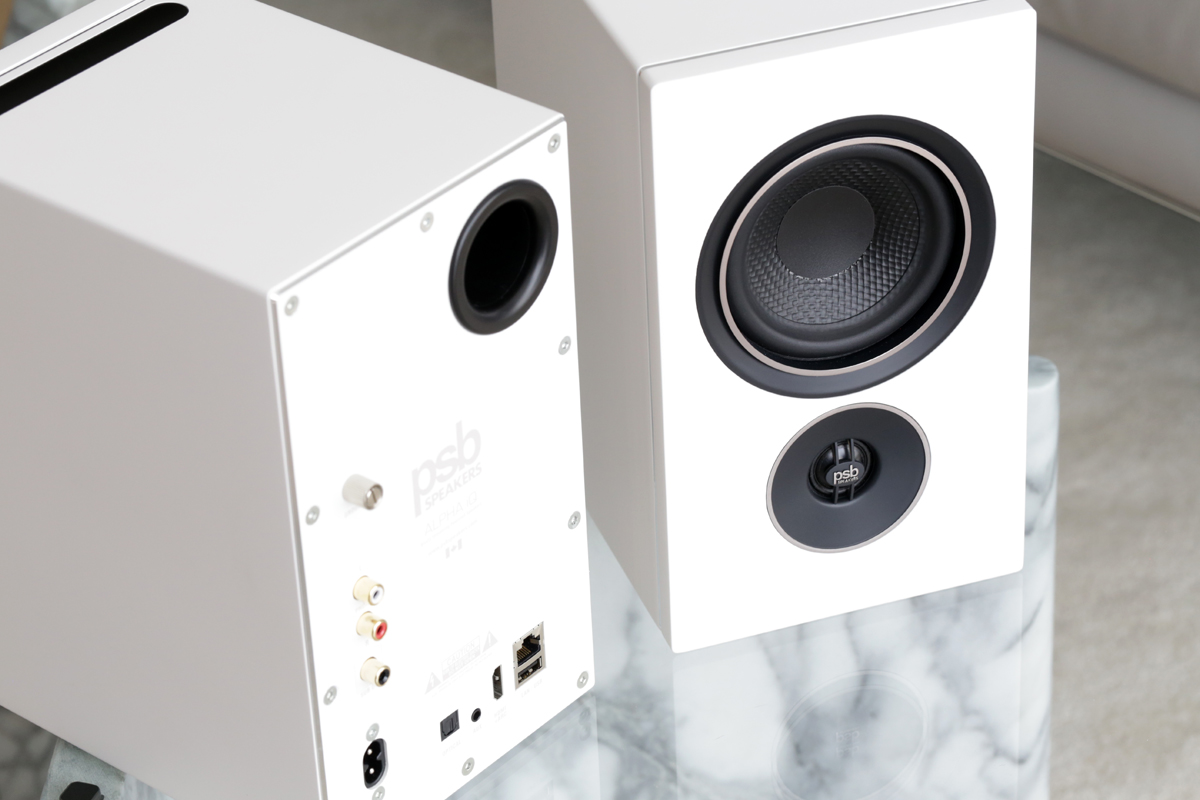
The Alpha iQ fits Simplifi’s mandate to cover “convenient, lifestyle-oriented hi-fi” to a tee. So do PSB’s Alpha AM3 ($549/system) and Alpha AM5 ($749/system) powered loudspeakers.
While conducting my Alpha iQ review, I asked Paul Barton if he’d sit down for an interview on the speaker system’s genesis and design, and on active and powered speakers in general. He graciously agreed. In early February, I met with Barton at Lenbrook’s head office, in Pickering, Ontario, just east of Toronto. We conducted our interview in one of the listening rooms of PSB’s development lab, with a pair of the company’s flagship Synchrony T800 floorstanders and a set of PWM2 on-wall speakers in the background—and some Alpha iQ prototypes tucked away in a corner. Joining us was Rob Nicholls, Lenbrook’s product designer for new media. The following interview has been edited for brevity and clarity.
Gordon Brockhouse: I’ll start with a blunt question. Why did it take PSB this long to release an active stereo speaker system? Paul, you and I talked a few years ago about an active design you were working on. As I recall, it was a pretty substantial two-way standmount design with a molded enclosure and gallium nitride amplifiers.
Paul Barton: I remember. BluSky was the internal name for the product. We even demonstrated it one year in Munich, behind closed doors. I remember offering to give you a pair to try.
GB: And I couldn’t take you up on that offer—I was too busy at the time. Why didn’t PSB bring that design to market?
Rob Nicholls: We wanted to develop the BluOS operating system further, and then we were more focused on refreshing the Alpha line and developing the new Synchrony line. It was a matter of prioritizing and allocating resources.
GB: I recall [Lenbrook president] Gord Simmonds telling me back in 2015 that he thought BluOS and PSB could fit very nicely together. So why did it take this long for PSB to launch an active speaker with built-in streaming?
PB: Over the last five years, people’s relationship with media and sound reproduction has changed, particularly after the pandemic. Our business was quite good during that period simply because people were locked down at home. Coming out of COVID-19, there’s a lot more awareness of new ways of listening to music.
We’ve been reserving a position for PSB and BluOS for the right time. With everything that’s happened in the last three years, now is definitely the right time. In fact, we wish we could have had the Alpha iQ out a bit sooner. Gord Simmonds is really excited about this product. He thinks the Alpha iQ is going to raise international awareness for PSB.
GB: Why this particular form factor—a minimonitor—in your entry Alpha series? That said, the iQ doesn’t feel like an entry-level product. It has a premium feel to it.
PB: This is where we saw the greatest opportunity. What we’ve done with the iQ is to optimize the performance-to-size ratio. You don’t have to get a very big speaker to satisfy 90% of your listening. It’s targeted to the customer who doesn’t dabble in all the peripherals. They just want a good-sounding system. If we tried to make a BluOS streaming version of one of our Synchrony towers, it would be amazing. But at this point, the customer buying a Synchrony T800 isn’t interested in having amplification integrated into the speaker.

GB: Do you see that changing?
PB: I hope it changes, because if it does, we can do a better job. As a designer, you have to make some assumptions if you’re not supplying a complete closed system—assumptions about the amplifiers people will use with your speaker, and assumptions about the rooms where the speakers will be used.
You can optimize a system better when it’s all integrated. With an integrated active system, we know all the parameters: dynamic-range capability, power handling, long-term thermal protection.
If you know the amplifiers that are used for each frequency range, you can control individual parameters independently, and more precisely. That’s completely different from traditional speaker design. Now, if I make the impedance lower to get a little more output, I’m not worrying that the amplifier is going to heat up more because I know the capabilities of the amplifier.
Speaker designers use a set of equations called the Thiele/Small parameters to predict the transfer function of a given design. You have to follow certain rules to get maximum sensitivity and bandwidth with minimum excursion, and you have to live with the physics of whatever configuration you’ve chosen.
If you combine knowledge of Thiele/Small with the ability to apply DSP, you have another tool to optimize the system to achieve whatever you want, whether it’s dynamics, output capability, or bandwidth. When you can optimize the speaker and amplifier as a system, you can control all of these things, and you can monitor all of these things.
Something we can do with DSP is to monitor the temperature of the voice coils. You might ask, who cares? Well, when a voice coil heats up, its DC resistance changes. So the voice coil’s characteristics as part of the system change with heat. We can monitor that and make the appropriate adjustments in real time. It makes dynamic accuracy much better. This is the kind of thing that we would want to integrate into a high-end hybrid loudspeaker to optimize the results.
That would include the listening environment. If we were to do a high-end speaker like an active Synchrony, we’d have to integrate room correction. With a tiny speaker like the Alpha iQ, that’s not as high a priority. As a speaker designer, you have to make some assumptions, but they take you only so far. I can’t control where a speaker is placed in a room, or the room itself. What I can guarantee is that if you set the speaker up properly, it can produce all frequencies equally.
GB: I’ve talked to designers and audiophiles who are skeptical about DSP. I find this mystifying. Do you encounter skepticism about DSP, and if so, do you have any explanation for this mindset?
PB: If you’re an audiophile and you reject the notion of using DSP to improve the performance of the system, or a part of the system, that’s like saying: “It doesn’t matter what room I put the speaker in. It’s going to sound the same.” But it won’t. So does the purist just accept that performance is going to change from place to place, and that a system may not sound as good as it could when it’s set up in another room? Does he refuse to allow DSP to fix the problem because he doesn’t believe in DSP?
I think that’s naive. In a perfect world, you could argue that manipulating the signal in any way is going to degrade it. A lot of these audiophiles argue that DSP may optimize frequency response but that the time domain is now way off. These are the people who build speakers with first-order crossovers to keep linear phase. I’ve not met anyone who can differentiate those kinds of things. But there are ways of using DSP to obtain linear phase if that’s what you want. What I’m saying is that some audiophiles tend to look at this from a very naive standpoint because they don’t understand the underlying principles. So the simplest way for them to resolve their issues is to just ignore DSP completely and say that it’s all bad.
Of course, there are some things DSP can really screw up. With two-channel stereo, you have to be very careful not to degrade the synchronization between left and right channels. If there’s a common signal and they’re in two different places, you get combing—and that’s not a good thing.
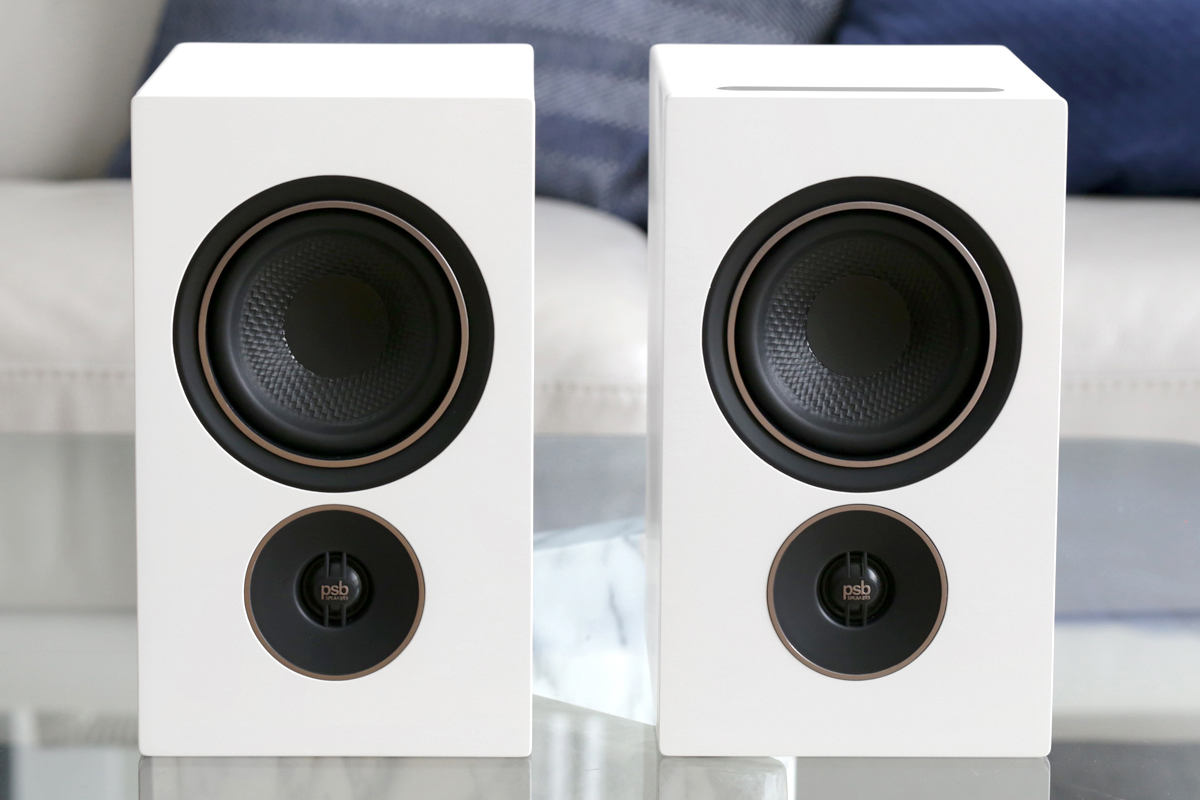
GB: We’re starting to see high-end active tower loudspeakers from brands such as Buchardt Audio, Canton, DALI, Dynaudio, and KEF. Some of them offer room correction. Are we getting closer to broad-based acceptance of these kinds of products? Or are these brands swimming against the current?
PB: I don’t think the die-hard audiophile will ever jump. What will happen is that affluent people, who can afford this type of thing, will be more attracted to integrated systems than systems with separate components. And they’ll achieve performance that’s as good as or better than an audiophile who’s picking and choosing everything can.
There’s another category of customer that we haven’t touched on: the affluent buyer who just wants the best but doesn’t care whether it’s integrated or not. This type of product—high-end active loudspeakers—is something a custom installer could add to his portfolio.
GB: And an integrated system is easier for the installer to deploy.
PB: Exactly. The installer isn’t in the audiophile world, and neither are his customers. He’s asking himself, what does the customer want? Where does he want it? And how does he want it to look?
GB: I’d like to discuss powered speakers as well—speakers with passive crossovers and built-in amplifiers. Let’s make an apples-to-apples comparison: an Alpha AM5 powered speaker system versus a pair of passive Alpha P5 speakers and a suitable amplifier. What do you have to spend on an amplifier for the P5 to get performance comparable to an Alpha AM5 system? Is that even possible?
RN: You won’t get the exact same performance with the P3 and P5 that you get with the AM3 and AM5 because the powered speakers have DSP.
GB: I know. Among other things, the DSP runs the MaxxBass algorithm, which makes bass sound fuller.
PB: The AM5 is better controlled, so that no matter what you do to it, it just plays. Part of the reason for this is that we’ve optimized the amount of power being delivered to the drivers. If you’re careful, you can use a more powerful amplifier with the P5, and maybe realize a little bit better performance than the AM5. But if you’re not careful, there will be a point where the passive version will start to fall apart. The AM5’s DSP will keep that from happening.
GB: In North America at least, die-hard audiophiles are mostly male boomers. What happens when they’ve all moved into retirement communities and the market shifts to younger buyers? Are younger customers more receptive to integrated systems?
PB: Rob can probably address this question better than I can. Rob, what about you and your friends?
RN: It comes down to the type of audiophile. You’re going to have people who want a full setup with a rack full of components. What it comes down to is people’s living spaces. Not everyone has room for a traditional system but they still want to be able to enjoy listening to vinyl, for example.
GB: I wonder if part of the vinyl revival is the desire to make listening to music an event again.
PB: It’s a ritual. There are rituals in all parts of our lives, not just for listening to music.
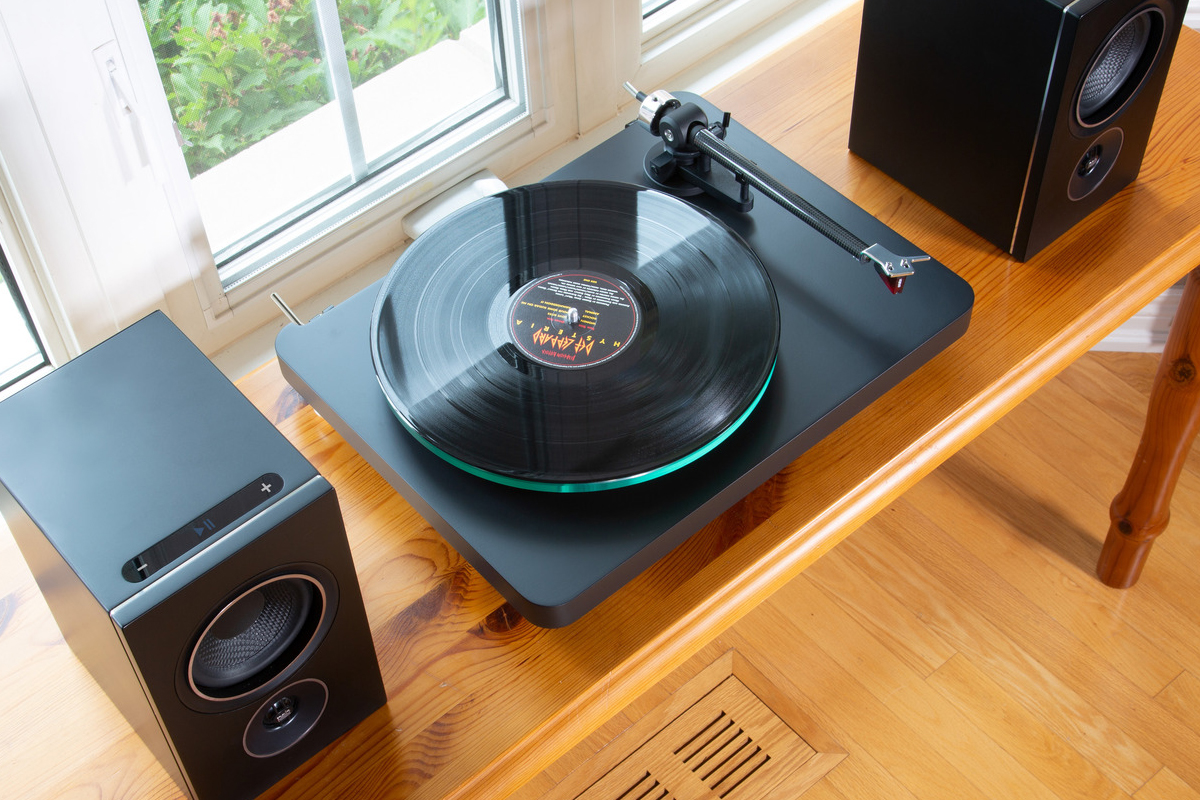
GB: Is the Alpha iQ’s phono stage the same as the one on the AM3 and AM5?
PB: Yes. It’s the NAD phono stage. It has really low noise and very accurate RIAA EQ. Taresh Vadgama [Lenbrook’s vice-president of engineering] designed the circuit for the original NAD PP1 back in London, England. It’s now used across all the NAD products that include a phono stage.
GB: When you’re playing an analog source like a turntable through the Alpha AM3, AM5, or iQ, I assume the signal has to be converted to digital. At what resolution?
RN: 16-bit/48kHz.
GB: On PSB’s powered speakers, all the processing and amplification is done in the primary speaker. What about the Alpha iQ? Is there a DSP in each speaker that implements the crossover and the other stuff that you do in DSP, or is it all done in the primary speaker?
RN: All the digital processing is done independently in each speaker. The only thing that’s common to the two speakers is the way in which they link together in terms of the streaming, or the source.
GB: And you’re using Wi-Fi for inter-speaker communications?
RN: The connection between the primary speaker and the home network is ethernet or Wi-Fi, and then the bonded connection between the primary and secondary speaker is a dedicated Wi-Fi network.
GB: What is the primary speaker sending to the other channel? Is it sending 16/48 or 24/96 all the time? Or is it sending data at native resolution?
PB: The primary speaker sends data to the secondary speaker in native resolution. If the primary speaker gets a 24/192 stream from the network, it will send 24/192 to the secondary speaker. Then each unit will do crossover, dynamic limiting, and biamping independently. There’s some accommodation for setting limits so the system doesn’t go into stress. At low frequencies, the DSP controls dynamics, to make sure the woofer does not have excess excursion.
GB: Listening to the iQ, I’ve been impressed with how loud it can play and really impressed with how deep it can go. Is that all done in DSP? And is the Alpha iQ doing any harmonic simulation the way the AM3 and AM5 do with MaxxBass?
RN: To answer your last question first, the Alpha iQ does not do MaxxBass processing—you’re hearing actual bass, not a synthesized harmonic series. That’s because of the acoustic design. The bass port snakes around the interior of the enclosure—from the back to the front of the speaker, across the front, and down to the bottom. The aim was to make the port length as long as possible, with the greatest possible diameter, so the port could be tuned as low as possible—around 40Hz.
PB: At that frequency, the port is doing all the work. The woofer can’t move very much because of the backwards EMF of the inductor pushing against the voice coil. Because it can’t move, there’s no inductance, so the current is at its highest. So the speaker is using the current with no cone motion to produce output through the port. The woofer’s distortion is very low because it’s hardly moving.
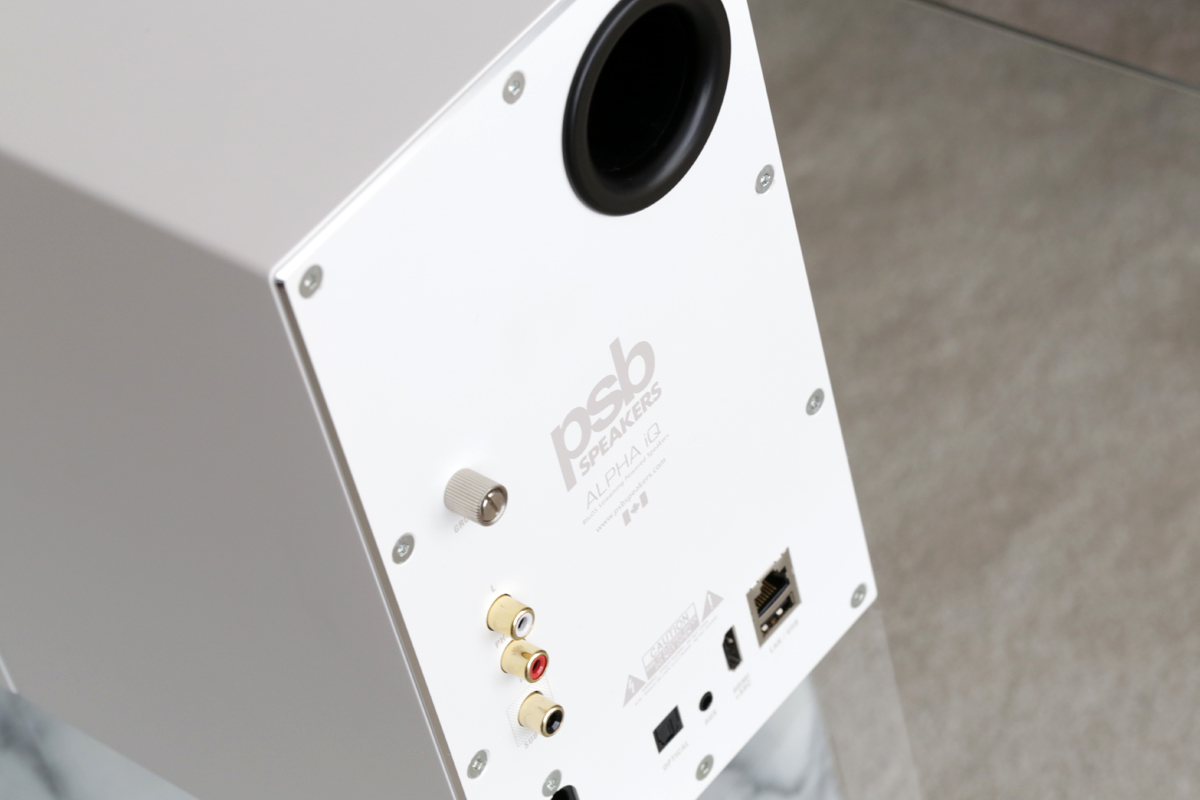
GB: Something I noticed about the Alpha iQ is that the speakers don’t weigh a lot. And if you do the knuckle test on the side panels, they’re a bit loud.
PB: We need to put the knuckle test into context. With the knuckle test, the amount of energy that you put into a cabinet when you hit it is about a hundred times greater than the speaker itself is capable of generating to excite that panel. You’re taking a brute-force approach. It’s like the difference between throwing a firecracker or dropping a bomb. You’re dropping a bomb on that speaker. It’s not a useful test to determine whether the cabinet is solid or not.
With measurements, you can see if the panel is doing something. Rob and I have done a lot of testing on that cabinet. We worked hard at getting the right amount of damping. With a very small, rigid enclosure like the Alpha iQ that has electronics inside, you don’t have the freedom to use a lot of damping material, so you can get internal ringing. That’s what you hear when you hit the cabinet. You’re exciting the air inside the enclosure. It’s rattling up and down, back and forth inside the panels. It’s not the panel you’re hearing—it’s the energy bouncing around inside the cabinet. We try and minimize that as much as possible. The speaker could never generate the energy you’re putting into that cabinet when you rap it.
Now, if you hit a cabinet with your knuckle and it goes b-o-o-o-o-om, that’s a problem. A resonance like that is easy to excite. You don’t need your knuckle to do that—the woofer can do it. But if you hit the speaker, and it goes ding, the speaker could never generate energy at those frequencies inside the cabinet, because the woofer is not producing those frequencies. A resonance can only be excited by energy that is in the same frequency range.
GB: Do you have any market data on the type of people who are buying products like the Alpha iQ, the AM3, and AM5, and the kinds of things they’re using them for? Or to pose this question a different way, was there a kind of buyer and application that you had in mind when you created these products?
PB: These products suit the lifestyle of people who don’t want to spend a lot of time figuring out how to listen to music. Convenience is a high priority.
GB: There’s a flip side to this. For a lot of people I know, it’s way easier to put a CD in a player or a record on the turntable than it is to pick up a phone and use an app to play music. And I don’t think that’s confined to older demographics. So in adding convenience in the way music is delivered, have we added complication in day-to-day use?
PB: You’re right about some people not liking to operate a music system from their phones. But you can connect a turntable or CD player to the Alpha iQ. It also has HDMI eARC, something a lot of speakers in this class do not. So the iQ becomes the center of the complete system. From a budget standpoint, you should do the math on what it would cost if you bought all this stuff separately. I think you’d find that the Alpha iQ is quite a good buy.
You can also load your music onto a USB stick and connect that to the Alpha iQ. That’s an advantage that the Alpha iQ has over a lot of its competition. It lets the Alpha iQ function as a server as well as a player.
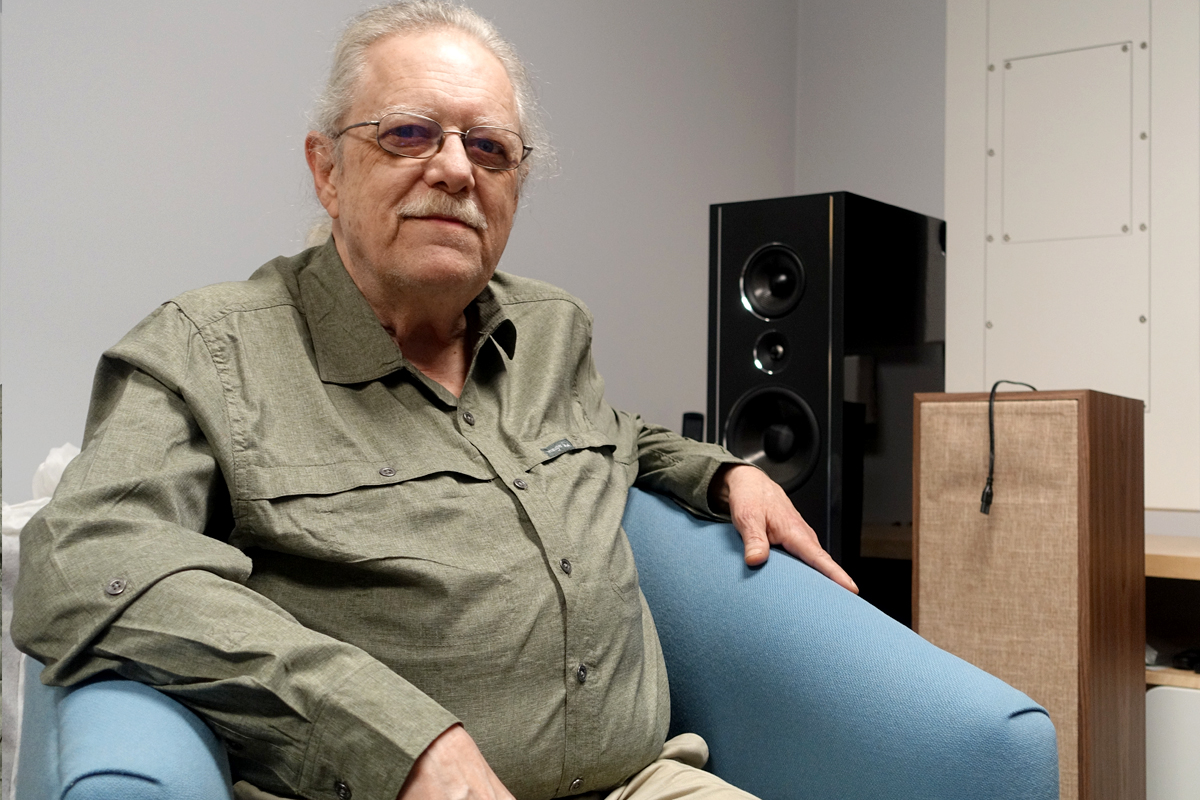
GB: We’re seeing non-traditional brands muscling their way into the audio market. For example, Apple is getting good reviews for their latest HomePods. Two of them can be paired, and they can play Atmos-encoded spatial audio tracks. They can sense the acoustic environment they’re being used in, and compensate for it in real time. Could these brands eat the lunch of traditional audio companies the way smartphone makers ate the lunch of traditional camera companies?
PB: These companies’ priorities are different from the priorities of an audio company like PSB. Their priorities are based on selling to the largest possible audience. I’m not expecting to sell the kind of volumes that they do. There is a large audience out there that can appreciate the difference between what these companies are offering and what we offer.
. . . Gordon Brockhouse



